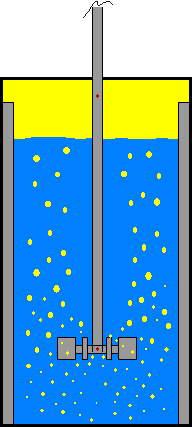Reactor & Process Engineering
The design, scaleup, modeling, and optimization of industrial processes require, among others, precise knowledge of the hydrodynamic, kinetic, and heat as well as mass transfer parameters of the pertinent gas-liquid-solid systems under actual process conditions. Unfortunately, literature values on these parameters are very scanty and most of the data available were obtained under ambient conditions with aqueous or highly ionic systems, and hence their use in reactor design or modeling could be misleading.


The focus of our ongoing research is on characterization of the hydrodynamic and gas-liquid mass transfer parameters in several important industrial processes, including Fischer-Tropsch synthesis, coal liquefaction, methanol synthesis, propylene polymerization, cyclohexane oxidation, benzoic acid oxidation, toluene oxidation, hydrocracking of vacuum oil residue, CO2 capture from fuel and natural gas streams using chemical/physical solvents, and SOX as well as NOX removal from flue gas using dry sorbents. Other research activities encompass CO2 sequestration in deep coal seams; and Enhanced Oil Recovery using CO2 and alcohols.
Our statistically designed experiments are conducted in high-pressure, high-temperature agitated autoclaves, trickle-bed, fluidized-bed, and slurry bubble column or ebulating-bed reactors operating with real gas-liquid-solid systems under typical industrial conditions. State-of-the-art instrumentations and sophisticated computer codes are dedicated to obtain, analyze, and develop novel correlations using our experimental data along with those available in the literature. These correlations are incorporated into comprehensive reactor models developed specifically for each process. These reactor models are then solved using advanced softwares and used to design, optimize and scaleup such industrial processes.